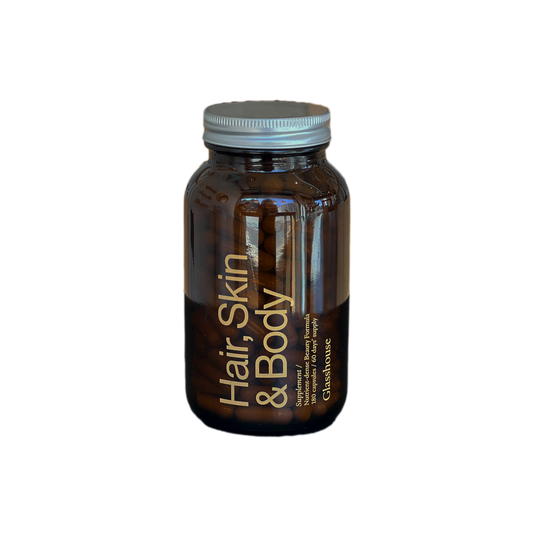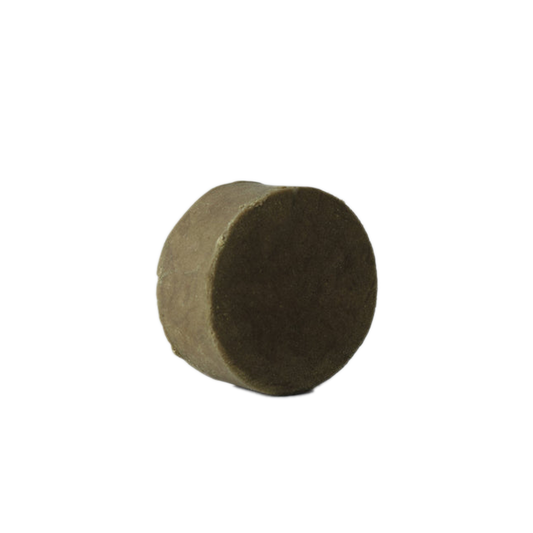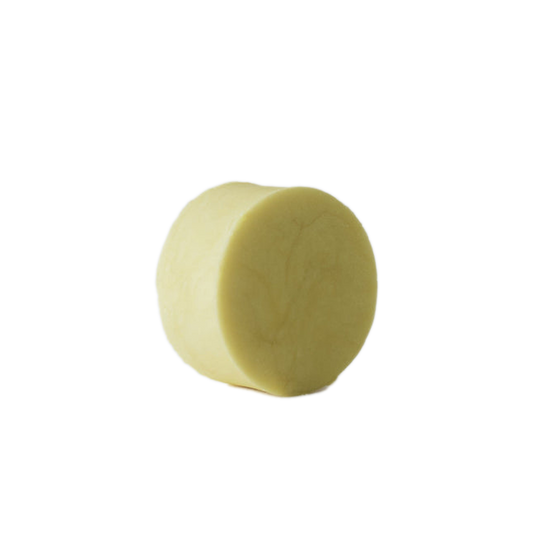We’ve always been open about our love of matcha at Glasshouse - the brightly coloured powder is packed full of antioxidants and we like it as much in our hot drinks as we do in our face masks and body scrubs. Making a matcha tea involves a traditional Japanese matcha set with an accompanying whisk, and it’s this part of the ritual which we enjoy most.
So when writer and long-time Glasshouse friend Naomi Bikis decided to venture into the world of ceramics with her debut collection, Bikis Ceramics, we thought it only right to collaborate in some way. Naomi has created a matcha set exclusively for Glasshouse, comprising of a ribbed cup and a spouted bowl - all handmade by Naomi in her East London studio. The two pieces can be used in tandem, or alone, and each have their own imperfections and differences, which Naomi says makes them “sisters, not twins”. Glazed in a matte blush pink and specifically designed for making and pouring matcha tea, we’re completely bowled over (excuse the pun) with Naomi’s beautifully pared-back collection.
As a relative newbie in the ceramics world, we sat down with Naomi to find out how she found herself at the potter’s wheel in the first place and what goes in to a bespoke Bikis Ceramic. Read on for the full interview.
The Bikis Ceramics x Glasshouse Salon collection is available to buy in the salon now.
Naomi Bikis of Bikis Ceramics

Tell us a little bit about yourself and how your journey into ceramics came about.
I’ve worked in fashion for years as a writer and editor. Three years ago I was craving something more tactile and hands on beyond my usual 9-9. I’d looked into masonry and chair building (as you do) but eventually scaled it back to ceramic classes. I had all these grandiose ideas about how I’d be a natural, able to master the wheel like no one the teacher had ever seen. In reality I was crap. But I loved these classes so kept at it before finding a studio to practice further in and begin to explore my own ideas. I now write and make ceramics, it’s a happy mix.
You’ve worked in an industry which is increasingly “switched-on” and technology-dependent. Was venturing into ceramics your way of seeking out a more practical way of working?
I think we’re taught to devalue manual work. If you failed your GCSE’s you’d cross your fingers hoping you got onto a beauty course or learnt how to skim a wall. But I’ve found that working with my hands has been so therapeutic and – as trite as it sounds – far more rewarding than hitting send on emails.
Talk us through the stages behind making a Bikis Ceramic.
I never trained in design so my process is very much evolving. I don’t tend to sketch out ideas. Instead I’ll sit at the wheel and after making prototypes get a sense of the shape I want to develop. A lot of the process can’t be controlled and handmaking means it’s almost impossible to repeat the same thing exactly. I like those variations so try to explore that in my work with ripples and texture and embrace the imperfections.
With this collection of Matcha pouring bowls and cups, because these are functional, there was a lot of testing first. They need to be heavy to not topple when whisking the matcha powder but you need to be able to pick them up and pour. They’re intended to be sets but considered as sisters not twins.

What was the thought process behind the colour palette?
I wanted a dusty pink colour that was matte for no other reason than I love the colour. I love the imperfections in a glaze and wanted to leave little drips or marks.
Aesthetically, how would you describe your personal style and taste?
I am still exploring my ideas but I like to make a balance of functional tableware and sculptural, useless objects.
Recently I’ve been focusing on unusual vases and objects, enjoying playing with forms and how the clay moves. I am influenced a lot by sculpture and would tend to research in that world rather than looking at other ceramic artists.
I am always drawn to the mix of colour and texture – a glossy tan glaze alongside the rough, unglazed clay. The clay bodies themselves are so beautiful that I like them to be seen.
We love the pictures taken by Greta van der Star for your website. What drew you to working with Greta?
I’ve known Greta for years and find her incredibly inspiring. I love her work and knew that if she pointed her camera at my ceramics all would be well.
Aside from pottery, what do you do to unwind?
I grew up by the sea so I swim at any given opportunity.

Images: Rosie Herdman for Glasshouse Journal




